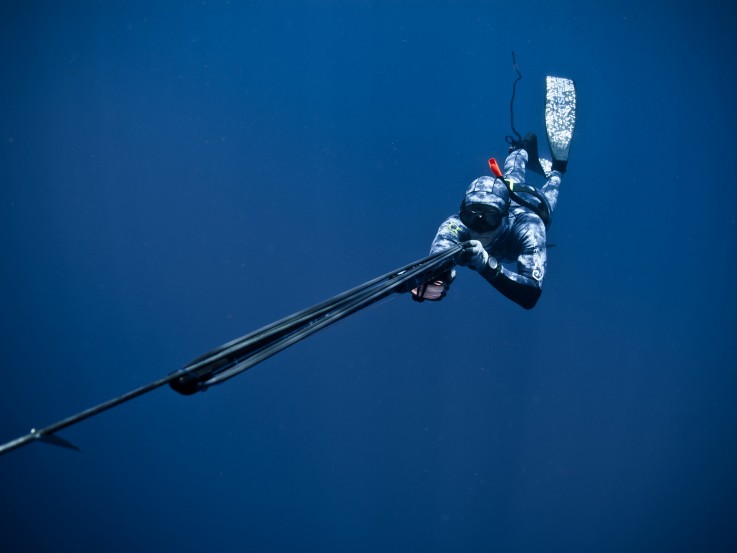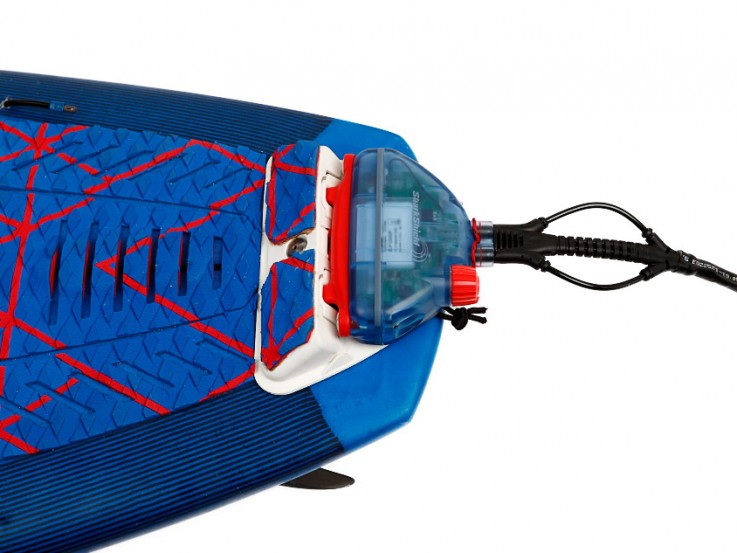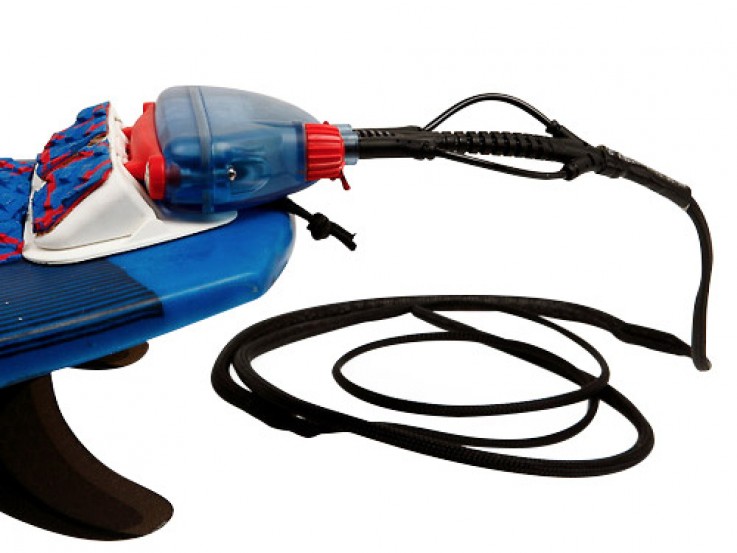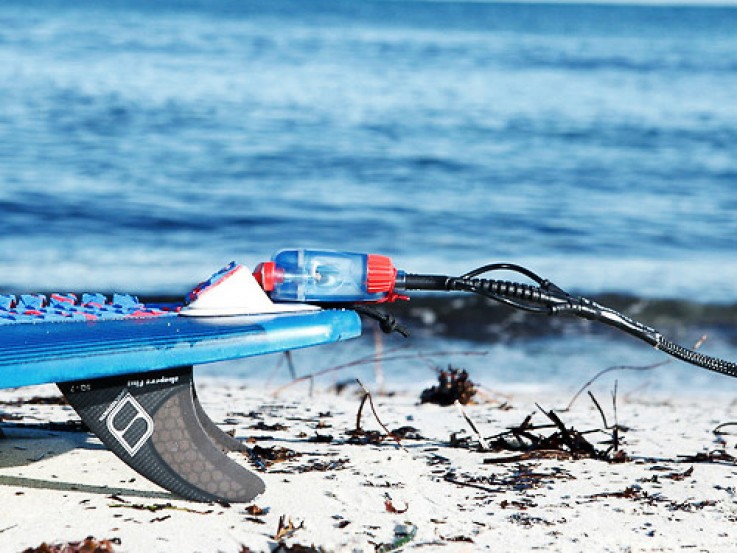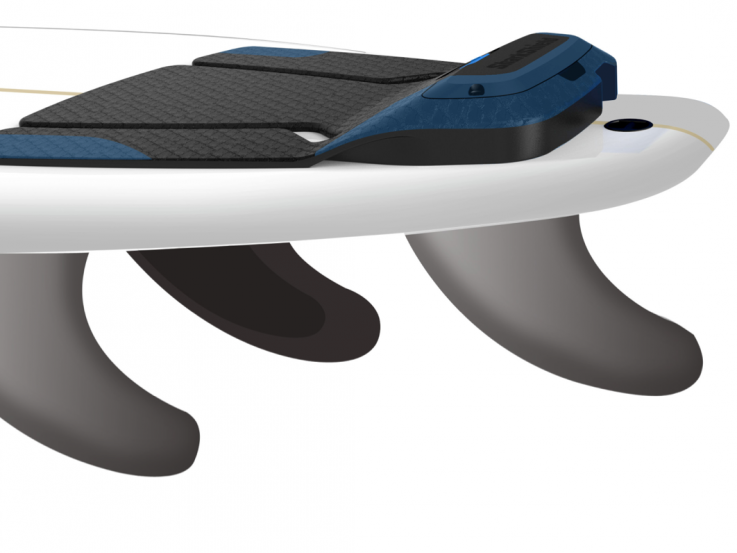Lindsay Lyon - Shark Shield
When did you first start surfing?
I started surfing at Cottesloe in Western Australia when I was about 12-13 years of age. We used to catch the train from an Inner Suburb; Bayswater into the city and then transfer with our boards and all to another train out to Cottesloe. My eldest brother who is 4 years older than me started the surfing craze amongst us, driving around in an old FJ with curtains and girls in the back. I’ve been surfing about 35 years now.
What is it that you love about surfing and the ocean?
I’d have to say it’s just the natural adrenalin and natural high that you get from being fit, being outside, and in the ocean. My son Hudson who is 21 was a state tennis player when we lived in Victoria and now that we’ve moved back to WA he’s picked up surfing with an absolute passion. He’s like I was at the same age where you just can’t get him out of the water. And when you eventually do get out of the water your body is tingling, you’re pumped, you’re happy and you’re just feeling great.
On that note, my first invention was actually a clock that goes under the glass of a surfboard so you could see when it was time to paddle in. That was back in the days before waterproof watches.
Do you have a session that stands out as your most memorable?
My favourite spots when I was younger were Margaret River main, left handers, and Southpoint. I’ve had some amazing surfs at Southpoint. I like to sit out the back and wait for the bigger sets so Southpoint is definitely the place for that. You get the bigger waves then carve your way through the crowd. It’s probably where I’ve had some of my most memorable surfs, I ended up on the rocks with a split head one too many times. But you felt like a hero walking back up the beach with blood running down your face so it was great.
What kind of education have you had?
I had very little education initially. My family wasn’t very well off so we all had to leave school at 14-15 and go on to get apprenticeships and jobs. It wasn’t until my mid 20’s that I realized I didn’t want to dig holes and crawl around in roofs in 40 degree heat anymore so I went back to school and studied electronic engineering then got into the computer industry in the late 80’s. I was lucky enough to work at Hewlett Packard for 14 years where I worked my way up through the company and ended up running the Commercial side of the business which was about a half a billion dollar business at that time. I then went to Melbourne Business School and did a Masters in Marketing in my late 30’s and was also fortunate enough through Hewlett Packard to do an Executive Management course at INSEAD in Europe. So in terms of education I started off pretty slow but picked up pace along the way.
How did you come to be involved with shark shield?
I have always wanted to be in Private Business, so in my mind, my time at Hewlett Packard was a learning platform where I could develop a set of skills and become confident in running my own business. My advice to anybody else would be to go into business straight away and learn all those lessons straight up. Don’t wait until your later years when you have a lot more to lose. I went into a couple of start up companies in the early 2000’s and I looked at Shark Shield about 14 years ago, offered to buy it 5 years ago and finally bought it 2 years ago.
Can you tell us a little bit about shark shield and how the concept came to be developed?
The original technology was developed in South Africa in the 90’s when they figured out that that all sharks possess these little gel sacks in which they use to detect electrical currents (food) at very close distances. The maximum sensing distance is half a metre and these little gel filled sacks spasm violently when they come in contact with a strong electrical field causing them to flee the area. This is what shark Shield does. An electrical shark deterrent is basically two electrodes with the salt water acting as a conductor between the two creating a large electrical field, if sharks get near it they flee. It’s proven technology that has existed for about 20 years now.
There is a huge myth in the surf industry that this electrical current will attract sharks when it actually does not. The ability for sharks to sense an electrical current is a short-range sense. Before they can sense the electrical currents they will use their sense of smell i.e. blood in the water, their acoustics and sensing of vibrations, their sight, and then last of all this sense which has a maximum distance of half a metre. The second point to stress is that electricity does not travel any distance through water. As soon as you put electricity in water it disperses. It’s a physical impossibility. A shark being attracted to an electrical field at distance is a complete myth.
What has the response been like from the surfing community?
The current product that exists for surfers; the Surf 7 works for larger boards because you’re not really going to notice the antenna and 300 grams behind your board. But if you’re a performance surfer on a short to mid sized board it will affect your surfing. This is why we are currently working with Tom Carroll who is helping us design a new innovation where we are looking at turning the fins of the board into the electrodes and fitting the electronics into the grip pad. That way, if you’re surfing somewhere that you think is a bit sharky you can simply change in these fins and the electronics into the grip pad. No impact on performance or the board design. We’re aiming to get that out in the market within the next 12 months.
Is there any further research going on regarding the technology?
There is some work being done in South Africa on using the same technology for beach barriers. Our research is all involved in personal shark deterrence in Spear fishing, scuba diving, ocean kayaking and surfing.
What is it that you love about your job?
What I love about being involved with your own business is the entrepreneurial side of what you get to do on a day-to-day business. You can make decisions to take the company in a direction without major board decisions. We can make easy decisions based on what we want. You can change direction and change your strategy. It’s the opportunity to operate nimble and fast that I love about being involved with a start up or early stage company. The speed in which you can move the business from one place to another is great.
Shark Shield are currently seeking investment capital to get their new products out into the market. Please contact Lindsay and the crew at Shark Shield with any enquiries.
Where can we find you online?
| Web: | www.sharkshield.com |
| Facebook: | www.facebook.com/Shark-Shield-Electronic-Shark-Deterrent |
| Twitter: | twitter.com/Shark_Shield |
| Youtube: | www.youtube.com/Sharkshield |
| Lindsay on LinkedIn: | www.linkedin.com/in/llyon |
Posted by: Matthew Ryan, on August 12, 2014
Categories: Interviews
Latest Posts
Craig Sims - White Horses & Surfing Life Publisher
Luke Kennedy - Editor of Tracks Magazine
Simon ‘Swilly’ Williams - Surf Photographer
Jarra Campbell - the Bondi Alchemist
Greg Gordon - Owner of CR Surf
Shayne Nienaber - Surf Photographer
Alexa Hohenberg - Owner of Still Stoked
Christine Deveney - TapaReef Owner & Creator
Russell Ord - Surf Photographer
Richard Kotch - Surf Photographer
Categories
Interviews
Articles
Videos
Press Releases
Quiz
Archive
December 2018
November 2018
October 2018
September 2018
August 2018
July 2018
June 2018
May 2018
April 2018
March 2018
February 2018
January 2018
November 2017
January 2017
December 2016
November 2016
October 2016
September 2016
August 2016
July 2016
June 2016
May 2016
April 2016
March 2016
February 2016
January 2016
December 2015
November 2015
October 2015
September 2015
August 2015
July 2015
June 2015
May 2015
April 2015
March 2015
February 2015
January 2015
December 2014
November 2014
October 2014
September 2014
August 2014
July 2014
June 2014
May 2014
April 2014
March 2014
February 2014
January 2014
December 2013
November 2013
October 2013
September 2013
August 2013
July 2013
June 2013
May 2013
April 2013
March 2013

